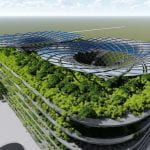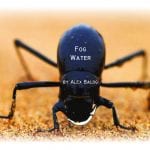Posted by
Nancy Cheng on Thursday, January 22nd 2015
HIGHLIGHTS from Thinking in Systems: A Primer by Diana Wright and Donella Meadows
Ch. 1
Re-framing to see the larger framework can complement traditional linear thinking, yielding new solutions.
Aphorisms contain complex system ideas:
A stitch in time saves nine.
Rich get richer and the poor get poorer.
Parts of an Elephant
Function or purpose is reflected in behavior, not rhetoric.
i.e. Bathtub: stock of water depends on outflow and inflow.
Stocks slow to change: act as a buffer
Feedback loops : rules to trigger actions that are dependent on the level of the stock – closed chain.
Balancing feedback loops > equilibrium, resists change
Reinforcing feedback loops > self-enhancing >> exponential growth, runaway collapses
Ch.2 Systems’ Zoo
Examples: Hole in the bucket, Thermostat and heating a leaky house
Stock-maintaining balancing feedback needs to have a goal that compensates for the processes draining the stock.
Dominance of inflow vs. outflow: Population, birthrate and mortality.
Complex behaviors can happen when dominance of feedback loops shift.
Testing the Value of a Model
1. Are the driving factors likely to unfold this way?
2. If they did, would the system react this way?
3. What is driving the driving factors?
Delays in feedback can cause oscillations (shower hot water). Changing the delay time of loop can have very large consequences.
Nonrenewable resources are stock-limited: faster extraction means shorter resource availability (depletion).
Renewable resources are flow limited: by regeneration rate. If extracted too quickly, they are essentially non-renewable.
Possible renewable paths:
– overshoot extraction >> adjust to sustainable equilibrium
– overshoot equilibrium >> oscillation
– overshoot equilibrium >> collapse of the resource (depletion of resource)
Ch.3 Why systems work well
Resilience: ability to recover / restore / repair themselves
Self-organization (fractals)
Hierarchy (watch repair subsystems). Ideally hierarchichal systems evolve from the bottom up with upper levels serving the lower levels
Ch.4 Systems and surprises
Linear vs. Non-linear
Adding fertilizer can generate more crops up to a point, then it kills them.
Too many cars kills flow
Soil erosion’s effect is minimal until all the topsoil is gone.
Non-existent Boundaries : waste and resources are in the same world
Input & output from systems depends on where we draw the boundaries.
Limiting factor is the most crucial. “Every physical entity with multiple inputs and outputs has Layers of limits.”
Delays are ubiquitous: timeframes will change how we see and intervene in a system, and their consequences
Each individual has “bounded rationality” (god grant us to accept what we can’t change, the courage to change what we can change and the wisdom to know the difference.)
Ch. 5 Traps
Trap: Policy resistance. Different players pull the system to their own motivations.
i.e. Population spur: Romania abortion/contraceptive ban >> illegal abortions, Hungary larger housing units, Sweden $ supporting child-rearing: better child care & free obstetrics, support for poor families, education.
Ch. 7 World of Systems
Systems thinking raises questions
Best Practices:
Carefully study the system first to get out pre-conceptions: examine potential causative factors and their relationships.
Expose mental models
Reveal information
Use language carefully
Include key non-quantifiable factors
Use policy to develop feedback loops
Look at the big picture, expand time horizons
Identify key triggers & responsibility
Keep learning: an open mind can overcome misconceptions
—






